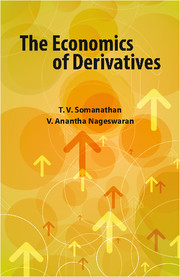Book contents
- Frontmatter
- Dedication
- Contents
- List of Tables, Figures and Boxes
- Foreword
- Preface
- Acknowledgements
- 1 Introduction
- 2 Definition and Typology
- 3 The Economic Functions of Derivatives Markets
- 4 Market Completion
- 5 Derivatives and Price Stabilization
- 6 Derivatives and Price Destabilization
- 7 The Effects of Derivatives on Prices of the Underlying: A Synthesis
- 8 Causes of the Rapid Growth in Derivatives Trading: A Historical Perspective
- 9 The Role of Derivatives in the Global Financial Crisis of 2008
- 10 Models and their Effects on Markets
- 11 Derivatives and Emerging Markets – Part I
- 12 Derivatives and Emerging Markets – Part II
- 13 Regulation of Derivatives
- 14 Derivatives and Development: A Critique
- 15 Regulatory Policy for Derivatives: A Pragmatic Approach
- Index
- About the Authors
9 - The Role of Derivatives in the Global Financial Crisis of 2008
Published online by Cambridge University Press: 05 May 2015
- Frontmatter
- Dedication
- Contents
- List of Tables, Figures and Boxes
- Foreword
- Preface
- Acknowledgements
- 1 Introduction
- 2 Definition and Typology
- 3 The Economic Functions of Derivatives Markets
- 4 Market Completion
- 5 Derivatives and Price Stabilization
- 6 Derivatives and Price Destabilization
- 7 The Effects of Derivatives on Prices of the Underlying: A Synthesis
- 8 Causes of the Rapid Growth in Derivatives Trading: A Historical Perspective
- 9 The Role of Derivatives in the Global Financial Crisis of 2008
- 10 Models and their Effects on Markets
- 11 Derivatives and Emerging Markets – Part I
- 12 Derivatives and Emerging Markets – Part II
- 13 Regulation of Derivatives
- 14 Derivatives and Development: A Critique
- 15 Regulatory Policy for Derivatives: A Pragmatic Approach
- Index
- About the Authors
Summary
In 2008, the financial system failed. The financial regulatory system failed. Though there were many causes of the 2008 financial crisis, derivatives played a central role.
Gary GenslerThe global financial crisis of 2008 was one of the most important economic events of recent decades, with long-lasting consequences. The causes of the crisis were several but there is little doubt that derivatives were one of the factors. This chapter begins with a very brief and simplified description of the crisis and its origins, and then examines the specific role that derivatives played.
The background and origin of the crisis
At the beginning of the twenty-first century a series of events prompted the US Federal Reserve to follow a loose monetary policy. In 1996, the then Federal Reserve Chairman, Alan Greenspan, had expressed concerns over ‘irrational exuberance’ in the stock market, but in the following three years share prices rose even higher. Greenspan became convinced that these increases were not irrational and reflected the productivity increases arising from the new internet-based technologies and, therefore, chose not to tighten monetary policy. There was an unexpectedly steep fall in the US stock market in 2000, when the earlier ‘dotcom boom’ ended and the prices of technology stocks, in particular, collapsed. It appeared that the Federal Reserve felt that the stock market crash might put this growth in jeopardy through a negative ‘wealth effect’ (i.e., if people feel less wealthy, they may spend less and thus reduce aggregate demand in the economy). In order to avoid or minimize a recession, the Federal Reserve felt obliged to provide a monetary stimulus. The terrorist attack of 11 September 2011 led to further interest rate cuts (another instance of the ‘Greenspan put’ mentioned in Chapter 8). With the benefit of hindsight, one can argue that Al Qaeda had some role to play in the global financial crisis of 2008.
- Type
- Chapter
- Information
- The Economics of Derivatives , pp. 107 - 121Publisher: Cambridge University PressPrint publication year: 2015



